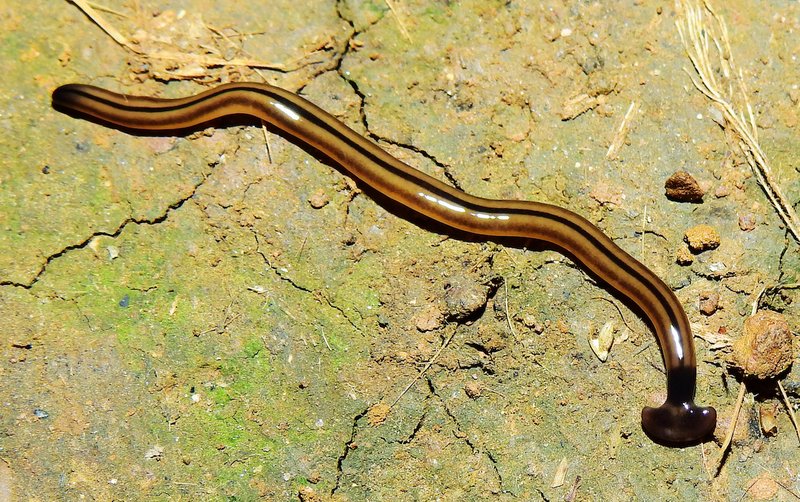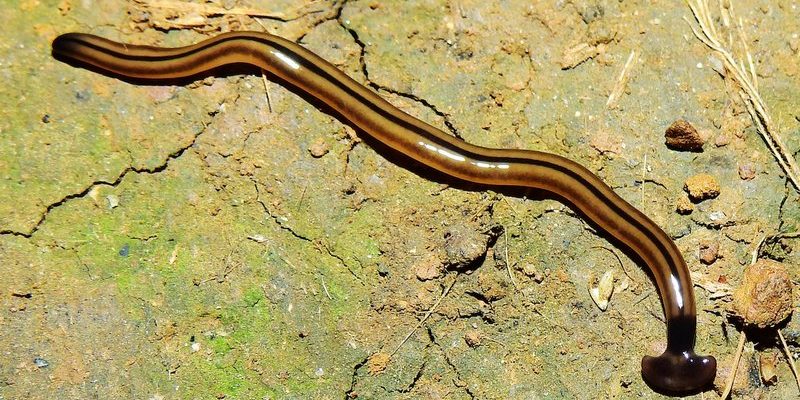
Picture this: you’re sifting your fingers through rich, dark soil, feeling the texture and moisture, all while relaxing under the sun. Now, imagine encountering a worm that looks like it just swam out of an aquarium. That’s the hammerhead worm—scientifically known as *Bipalium kewense*. With their distinctive T-shaped heads, they’re not just a curiosity; they can impact your garden’s health. Let’s dive into identifying these squirmy invaders, understanding their behavior, and figuring out what actions to take if they show up in your garden soil.
What Are Hammerhead Worms?
Hammerhead worms are fascinating creatures that belong to the flatworm family. Unlike the earthworms we’re used to seeing, these worms are part of the larger group known as planarians. They typically measure between 4 and 8 inches long and have a unique hammer or shovel-shaped head, hence the name. Their bodies are usually a mix of brown, gray, or black, often sporting lighter stripes or patterns.
You might be wondering why these worms have become a topic of conversation. Well, they have a reputation for being predators. They prey on other worms, which can be detrimental to your garden’s ecosystem. Their appetite for earthworms can lead to soil that lacks the beneficial aeration and nutrient cycling that these good worms provide.
You may also encounter them more frequently in areas with warmer climates as they thrive in moist conditions. If you’re in a region that experiences milder winters, it’s possible that you’re sharing your space with these slippery little guys.
How to Identify Hammerhead Worms
When it comes to identifying hammerhead worms, there are a few key characteristics to look for. First, remember their signature shape. Their flat, elongated bodies are more robust than other worms, and that distinctive head? It’s like a mini hammerhead shark peeking out of the soil.
Next, focus on color. These worms can range from brown to gray, but they often have striking longitudinal stripes that run down their backs. This pattern can help you tell them apart from other garden worms.
Another identifying feature is their movement. Hammerhead worms wiggle in a more serpentine fashion compared to the smooth, burrowing actions of earthworms. They often move around the garden quickly, which can be a little startling if you’re not expecting it!
Keep an eye out for them during damp weather, as they tend to be more active when it’s humid and moist. If you see a worm that matches this description, you might just have yourself a hammerhead worm.
Why Hammerhead Worms Can Be Problematic
So, why should you care about these hammerhead worms? While they might seem intriguing, they can cause some serious issues for your garden. As mentioned, they feast on earthworms, which are crucial for soil health. Earthworms help aerate the soil, break down organic matter, and improve nutrient availability for your plants.
Simply put, fewer earthworms mean poorer soil quality, which can lead to struggling plants. We all want our gardens to flourish, right? Hammerhead worms can disrupt that balance, making it harder for your plants to grow strong and healthy.
Additionally, if you’re a gardener who treasures biodiversity, hammerhead worms can upset that too. They are non-native species, and their presence can disrupt the local ecosystem. While they eat other worms, they can also compete for resources with beneficial soil organisms.
In short, while they might look like a fascinating addition to your garden, hammerhead worms often bring more harm than good.
How to Handle Hammerhead Worms
If you discover hammerhead worms in your garden, you may be wondering what you can do about it. The first step is identification, so you know exactly what you’re dealing with. If you confirm that you’ve found a hammerhead worm, there are a few methods to consider for managing their population.
You could start by physically removing them. It sounds a bit icky, but wearing gloves, you can pick them up and place them in a sealed plastic bag. Make sure to dispose of them far away from your garden to prevent them from returning. Just remember to wash your hands afterward!
Another option is to adjust your soil health. By improving your soil’s condition—think composting and introducing beneficial organisms—you can create an environment that encourages earthworms to thrive. Healthier soil can provide natural resistance to hammerhead worm invasions.
You might also consider barriers. Some gardeners have found success with physical barriers like copper tape around garden beds, or even simple traps that can capture these pesky invaders without harming the rest of your garden.
Preventing Hammerhead Worms in Your Garden
Prevention is always better than cure, right? One of the best ways to keep hammerhead worms out of your garden is to create a thriving ecosystem that supports beneficial worms. This means regularly adding organic matter to your soil, like compost or well-rotted leaves. These amendments feed earthworms and improve soil structure.
Another tactic is to maintain healthy moisture levels in your garden. Hammerhead worms love moist conditions. If you can, try to keep your soil well-drained and avoid overwatering. You could also promote healthy plant diversity by practicing crop rotation and companion planting, which can help deter these invasive worms.
Monitoring your garden regularly is crucial too. Make it a habit to check for any strange worms or other pests that may not belong. The earlier you catch hammerhead worms, the easier they are to manage.
Lastly, educate yourself about the local wildlife and soil organisms in your area. Understanding what’s natural in your environment will help you better identify invaders like hammerhead worms.
Understanding how to identify hammerhead worms in your garden soil is essential for maintaining a healthy environment for your plants. These unique-looking invaders might pique your curiosity, but they can pose significant threats to your soil’s health and biodiversity. By knowing what to look for and implementing strategies to manage or prevent their presence, you can keep your garden thriving.
Gardening is all about balance, and as you nurture your plants, think about the whole ecosystem. Every creature in your soil has a role, and by managing the hammerhead worm population, you’re helping ensure your garden flourishes for seasons to come. Happy gardening!

